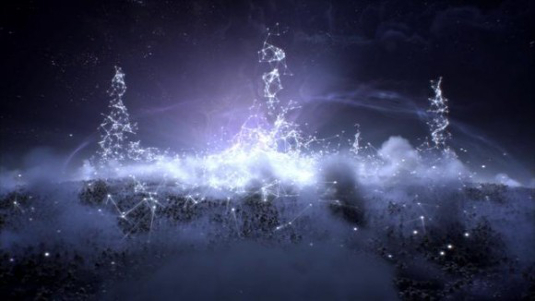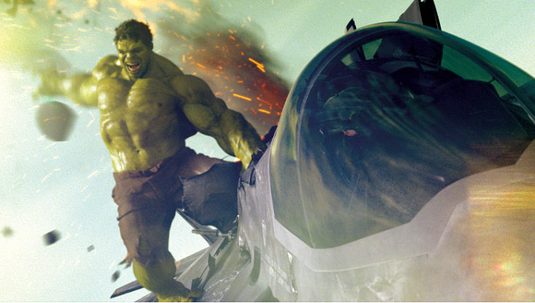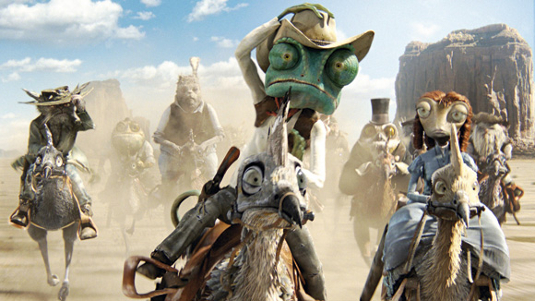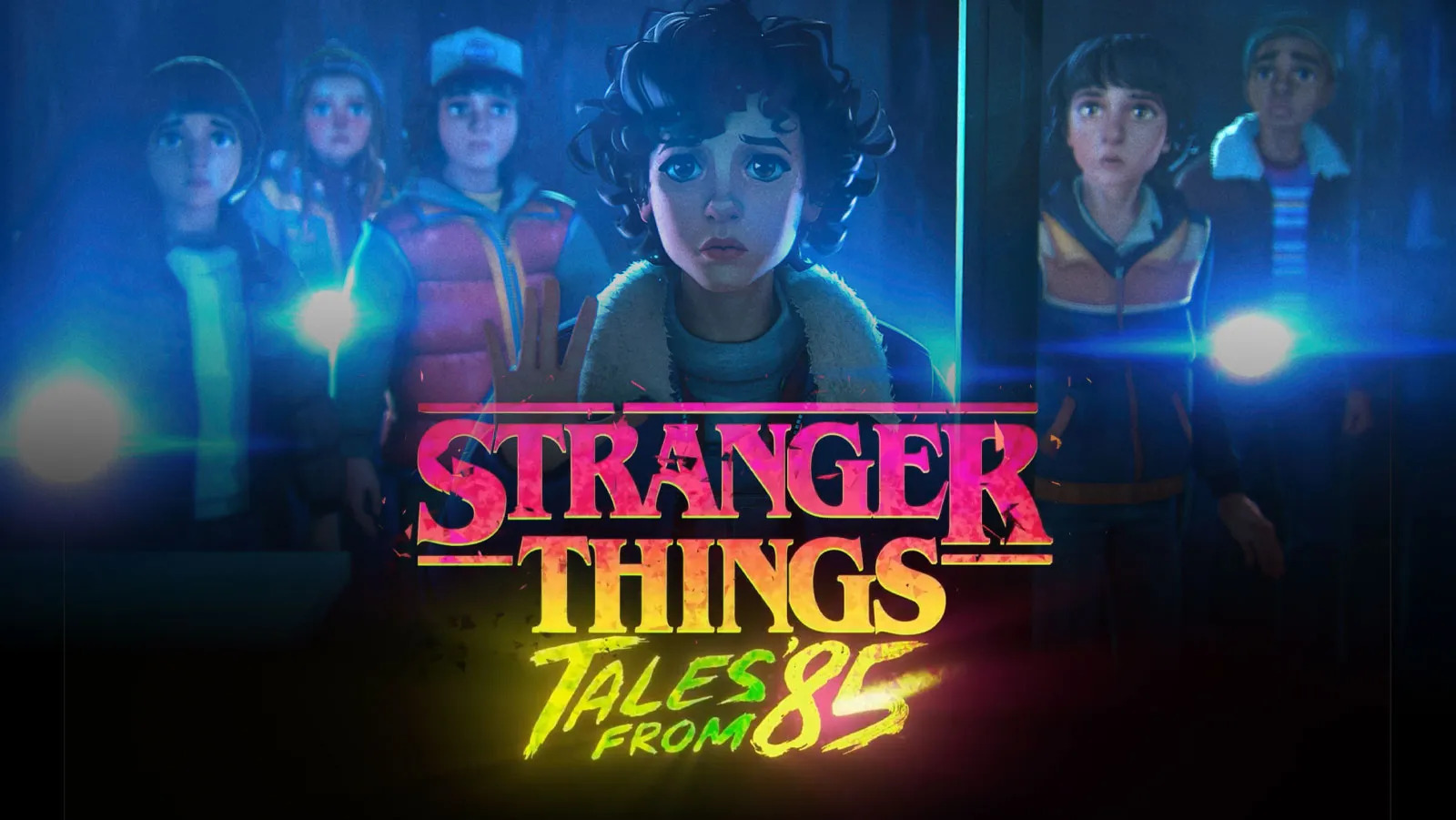Meet the 3D Artist: Andreas Feix
Meet Andreas Feix, a VFX and animation student at the Filmakademie Baden-Wuerttemberg. Watch Andreas’ demoreel and recent animation Dragon Days, and find out how he works…

Andreas Feix is a 25 year-old, German visual effects and animation student at the Animation Institute of the Filmakademie Baden-Wuerttemberg, who started his career by animating LEGO with stop-motion at the age of 14, and has worked on a number of feature films, television and commercial projects since. Some of his recent work includes Globosome, the Dragon Days festival trailer, the Turkish Vestel commercial series and the current third season of Game of Thrones.
Watch Andreas’s demoreel
3D World: How did you break into the industry?
It was back in 2007, just when I had finished high school and started off my 9 months of civilian / social service, that I considered looking for an internship in the field of visual effects.
Prior to that I had already been creating small animation and VFX projects at home with the limited toolset I could afford, and annoyed the hell out of my classmates whenever I tried to coax them into shooting a small film with me. I had also done some weekly scholar internships at a local TV station, but the work there never elevated past doing some lower thirds.
So I just hoped for the best and I sent my showreel at first to a VFX house in Stuttgart called Unexpected, and the VFX supervisors there responded very quickly and invited me in.
What intrigued them the most was, rather interestingly, the types of work I had done before, which included a robot documentary, a Star Wars fanfilm, digital LEGO comped with live-action and a personal attempt at doing a Sin City fanfic. In other words, they appreciated that I had a mindset wacky & geeky enough to enjoy working on the types of commercial projects they usually do.
They were, however, more suprised to hear that most of the work was done using Strata Studio Pro and an educational copy of After Effects, which at that time was simply the best I could afford.
Apparantly they saw some potential, as they gave me a chance, and once I started as an intern, I stayed there as an employee for the next 18 months, doing both 3D and comp work right until I applied at the Filmakademie for studying.
Daily design news, reviews, how-tos and more, as picked by the editors.
3D World: What do you do?
At the moment I am a VFX and animation student at the Animation Institute of the Filmakademie Baden-Wuerttemberg, where I am about to start working on my graduation project. So far though I have already worked at a few German VFX facilities, such as Unexpected & Pixomondo, and I have also done freelance work for film projects both in Sweden and Germany, a notable portion of them being projects by fellow students.
Even though I am primarily aiming for 2D and compositing, I have also built up some experience to become a 3D generalist as well, depending on the size of a project and the kind of work it has to offer and so that I can still pursue to do a bit of animation work on my own. Doing stereoscopic work at a more creative level is also something which I am interested in, and I already had the chance to do so on a few films, including last year’s FMX trailer Globosome (2012).
3D World: What first inspired you to become an artist?
My personal interest in visual effects is actually linked to my childhood dinosaur obsession: It got ignited in 2000 at the age of 11, when the BBC’s Walking with Dinosaurs had just been shown on television, and it was fuelled even more by Disney’s Dinosaur and Jurassic Park 3 being released in cinemas soon after.
Prior to that my dream job had switched between becoming a paleontologist and a rollercoaster designer on a yearly basis, but suddenly I was really eager to understand how filmmaking tools were used to create those creatures on screen.
Also around that time my parents had just bought a DV camera for the whole family to record events and travels, whereas I had more interest in actually editing the footage afterwards and just playing around with the material. Then the first wave of brickfilms circled the internet, and I wanted to try it out myself, so the camera and the editing software got quickly repurposed to record LEGO, and shortly afterwards I joined the brickfilm community on the net.
The goal to become an artist was made when I met film students at a film festival, who told me that it is also possible to study VFX and animation at film schools. From then on my career path was pretty much chosen; otherwise I might have decided to become a director instead.
3D World: Where do you draw your inspiration from?
Most inspiration usually comes from watching a lot of films and television shows, with a certain bias towards science-fiction, fantasy (but not the World of Warcraft type), and anything related to dinosaurs. That also includes both videogame cinematics and playing the games themselves, especially when happy accidents occur during gameplay.
I also tend to get ideas by listening to music, when my brain simply tries to associate random images to the music, sometimes that surely can spawn some weird ideas.
Technical inspiration usually comes from looking at the work of others and fellow companies, or just everyday observations of the surroundings, though it is odd at times to walk down a street and notice myself trying to do a technical breakdown in my head.
3D World: What is the most enjoyable project you have worked on so far in your career?
There is usually an interesting or funny anecdote attached to most of the projects I have worked on, but the most memorable of them all would be Threads of Destiny, a feature-length Star Wars fanfilm by a student director from Sweden. Not so long ago I actually finished off my last shot on the project, despite the fact that I have been working on this one since 2007.
It was around the time I had finished high school when the director asked me if I would like to participate to work on a sequence, and since then, despite the fact that it is all DV work, I am a little bit proud about the fact that I have completed approximately 770 VFX shots on the entire project, which most recently even included doing full CG action sequences.
As an additional fun fact, nearly every single shot of mine was actually completed just by using a notebook. Not only do I cherish the experience I received while working on individual shots and experimenting with techniques; the project also helped me to develop a critical thinking for VFX work, due to the fact that I frequently encountered problems with individual shots or workflows and had some lengthy discussions about them with the director.
3D World: What software/tools and techniques do you use on a day-to-day basis?
For compositing I like to use a combination of Nuke and After Effects, usually trying to play to the strengths of each package.
If things need to be done quickly and rather simple, the choice goes to After Effects, when it gets a bit more complicated, it is better done in Nuke, otherwise I would be lost very quickly without a node tree, even though I have already had my fair share of deducing complicated comp setups in After Effects.
The 3D work is all based around 3ds Max, with a few plugins such as V-Ray and FumeFX, but mainly I am trying to generate the CG work using only the core package. Not only does that sometimes lead to more intuitive solutions, but it also allows me to be more flexible for whom I might work for, as I wouldn’t be depending most of the times on plugins which might cost extra. Regardless though I’m still trying to learn new types of plugins and additions if they can help me on some type of work in the future, such as Thinking Particles and Phoenix.
The rest of the tools of course always changes depending on the project or the type of work: For scuplting details and texturing it is Mudbox with a bit of Photoshop, because they work very well together.
I prefer to use SynthEyes to do 3D tracking and matchmoving, which to a certain degree is a pricing issue, but also because of its flexibility and the amount of software packages it supports.
When I was in need to do fluids for one specific project so far, the choice went towards Realflow.

3D World: Please could you share a technical ‘secret’ or top tip with us on how you work?
To be honest, sometimes it is ok to be a bit lazy, because that sometimes makes you find a much more simple solution to a problem. Just because it is simple doesn’t have to mean that it has to be less successful or cheaper looking, also depending on your pocketbook or accessable gear it may save you a great deal of… everything.
For example, particles might be easier to control than fluids, Sprites render alot faster than volumetrics, and may yield the same result if combined with depth maps in compositing, and distortions are better controlled in 2D than rendering a 3D shader. The list goes on and on all that counts in the end is that it has to feel right.
Use your own surroundings as an inspiration, even casual observations. Recreating certain effects or looks just needs the right place to start sometimes; it can be as simple as looking into a mirror and observing what your own eye does or how it is affected by light.
I regularly listen to podcasts and interviews with business professionals, because occasionally they talk alot more in detail about their work and also share interesting secrets, and sometimes I also enjoy just watching vfx breakdowns of other artists & companies and try to deduce how certain elements were made. You might be surprised how often the key element or the subtle effect that sells the shot is so simple in it’s design that it could be easily reverse-engineered by everyone, and then it just depends on how well it is integrated.
3D World: What’s your favourite CG package?
It would be a split between both Nuke and 3ds Max. Nuke is without a doubt a powerful tool and the flexibility to manipulate images, including 3D & stereo work. What I find most enjoyable is the ability to shape the toolset by generating custom tools and effect groups which can improve and speed up the daily work.
3ds Max on the other hand is my favourite package, perhaps because I have been working with it for the past 5-6 years, but I have also tried other packages such as Maya and I never got the hang of them. Somehow the toolset of 3ds Max, such as the modifier stack, Particle Flow and animation constraints must have resonated with my methods of working in compositing and I have been happy with it ever since, especially with the large collection of plugins and scripts that the community has to offer as a bonus…
3D World: What’s your favourite film?
That is really a tough question, as I do enjoy a fair amount of movies, with or without notable visual effects, and more following, but I will limit it down to a tie between four of my favourites:

The Avengers: Not only because it is a great film – with great visual effects, fun characters, clever humour and the „Joss Whedon factor“ – but also because it was one of the best cinema screenings I have ever experienced so far: At the FMX Conference 2012, in a theatre jam-packed with fellow business colleagues, professionals and geeks all engaged, it was thrilling when both the best jokes and the vfx credits received standing ovations. Tied in with great presentations both by ILM and Weta Digital, and the fun fact that, only 5 minutes before all of it, I happened to explain the stereoscopic work of the FMX trailer in front of the very same audience!
Jurassic Park: The dinosaurs, of course, but it was also one of the first vfx movies I ever watched, back when I was six years old. I still remember that I paused the VHS and hid around the corner when the raptors entered the kitchen because I was so terrified. Today I still enjoy it as a great film, and I view it as a great example of filmmaking, where a few well placed and cleverly executed visual effects can mean a big difference.
District 9: I found the central premise of aliens living in a slum and the way it was set up as a documentary piece very exciting, and how it gave the entire picture a certain degree of grunge and social tension which I often both miss in science-fiction these days. It also amazed me how much I cared for Christopher Johnson, his son and the other despite their appearances which is a testament to all the artists who worked on the film. The theme that humans end up being the true monsters is something I personally find very intriguing that I even tried to incorporate it into my own sci-fi work.
Credit also goes the great acting of Sharlto Copley and the development his character endures throughout the movie: My favourite moment is the ending, when Wikus (spoilers!) watches the dropship succesfully dock at the large spaceship while he stays behind and accepts his fate of slowly becoming a prawn, as it was both beautiful and sad at the same time.
Blues Brothers: In short, it is a great musical full of action and fun, and it’s one of those rare films (unlike some of the James Bond titles, in my opinion) where the cheesiness of some scenes by today’s standarts even plays to the film’s advantage and its light-hearted overtones.
3D World: What’s your favourite CG animation?
That is a bit easier, even though it is a tie here as well. I tend like the better half of animated movies out there, though most of them don’t really cut it to become favourites as they always seem to follow the Pixar look, which in my eyes has become a bit unoriginal.
Rango on the other hand felt much like the grown-up version of an animated movie, both storywise and visually: Because the makers (ILM at its glory once again) tried to capture more of a look which felt photoreal, or realism as the audience perceives it on film, it had so much detail and grunge that both the environment and characters felt incredibly rich and fleshed out, and even more lovable so. Metaphorically speaking it found its beauty by striding towards ugliness.
Legend of the Guardians falls a bit into the same category, regarding the visual detail, but what I enjoy the most is both the cinematic and visual style: The composites and framing of certain shots which made it feel like a graphic novel, combined with the comparably dark tone, the choreography and even Zack Snyder’s classic speed ramps – it all simply made for a visually engaging ride, with certain images that still give me chills every time I watch them.
Besides, some of the owl characters are just so beautiful to look at, with those huge eyes…
And How to Train your Dragon (duh), mainly because Toothless steals the show every time he is in the shot, but also because I am a cat person and one of my family’s cats tends to look at me exactly like him, coupled with some odd behaviours as well. Storywise I also found the ending very brave, when the hero discovers that he has lost one of his legs and therefore fully bonds with his dragon as they both have their handicaps, something I have rarely seen on that type of movies so far.

3D World: What studio’s work do you most admire?
Flat out, it is Industrial Light & Magic. Not only because of the work alone, which never seems to disappoint, but also in respect to the company’s history and its achievements with regards to our industry.
Apart from that I always like to look out for the most recent cinematics work by either Blur or Digic Pictures.
3D World: Please comment on how the industry has changed since you first started
There have been numerous changes which had both their ups and downs: Both the software and hardware has become cheaper and more accessable, which now especially allows talented people to break into the industry easier as they are not limited by access to technology. But that also has broadened the pool of potential artists and personal competition each one of use faces.
The same goes with the VFX companies, as the market has grown in new areas around the globe, while some of the big houses are facing difficulties as they try to stay in business.
Shorter schedules and lower costs have increasingly become an issue over the past few years, though it might have reached somewhat of a turning point with the Academy Awards ceremony: When a movie’s work is rewarded while one of the companies goes bankrupt and the issue gets downgraded both by the ceremony and the awarded director himself, it is not just a problem in the industry but also an insult to the work we do.
Andreas worked as the Stereo lead on the FMX Globosome trailer last year
What advice can you give for aspiring artists looking to break into the industry?
Be smart, and experiment whenever you can, you will never know what kind of effect you might create.
It is never wrong to be a little bit rebellious at times. Submitting yourself to a work ethic or a pipeline is essential, as projects and companies need to be well organised; but if you can offer a different solution out of the box, you may surpise you superiors and colleagues for good.
Also broaden your theoretical and software knowledge whenever possible, even if you seek to specialise. Because when you know how to work in a way that benefits other departments and your colleagues, and you can understand their type of work and expertise, everyone can profit from a healthier form of cooperation.
And, if you attempt to recreate an effect or a certain image based on a tutorial, try to further improve on it, make it look better or just watch it for the technical knowledge; otherwise you will end up competing against tens or hundreds of other persons who can do exactly the same as you.
Without sounding too harsh; Youtube is already flooded with enough Demon Face Warps, Earth Zooms and other copycats, and if companies would need someone to do exactly that types of FX, they’d probably want to hire the guy first who actually wrote the tutorial in the first place.
At last, not a lesson, but a some words of wisdom: enjoy your work, or, depending on the situation, at least your field of work. After all, you don’t trust a cook who doesn’t like eating!
Thanks to Andreas for the interview. Read about Andreas Feix’s making of Dragon Days, aka Lindworm, initially developed as a trailer for the ITFS

The Creative Bloq team is made up of a group of art and design enthusiasts, and has changed and evolved since Creative Bloq began back in 2012. The current website team consists of eight full-time members of staff: Editor Georgia Coggan, Deputy Editor Rosie Hilder, Ecommerce Editor Beren Neale, Senior News Editor Daniel Piper, Editor, Digital Art and 3D Ian Dean, Tech Reviews Editor Erlingur Einarsson, Ecommerce Writer Beth Nicholls and Staff Writer Natalie Fear, as well as a roster of freelancers from around the world. The ImagineFX magazine team also pitch in, ensuring that content from leading digital art publication ImagineFX is represented on Creative Bloq.
